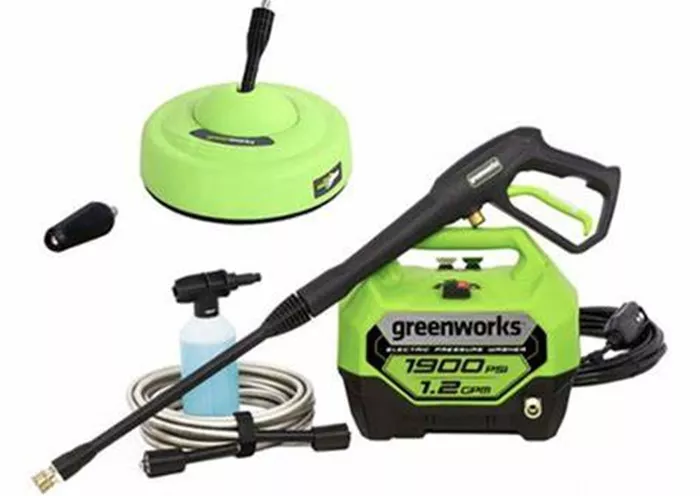When faced with a one – day cleaning project, be it sprucing up a driveway, refreshing the exterior of a small business, or prepping a large outdoor area for an event, renting a pressure washer can be an efficient solution. But the cost of renting a pressure washer for a day isn’t set in stone. It’s influenced by a multitude of factors, and understanding these can help you budget effectively for your cleaning task.
Type of Pressure Washer: A Pivotal Cost Factor
Cold – Water vs. Hot – Water Pressure Washers
Cold – water pressure washers are a popular choice for daily rentals due to their versatility and relatively lower cost. They’re powered by electricity or gas and use regular tap water, propelling it at high pressure through a nozzle to dislodge dirt, grime, and mud. Their simplicity in design, lacking a heating mechanism, contributes to their affordability. These are well – suited for a wide range of common cleaning jobs, such as washing cars, cleaning patios, and removing surface dirt from outdoor furniture. If your cleaning task doesn’t involve stubborn grease or oil stains, a cold – water pressure washer is likely to meet your needs without straining your wallet.
In contrast, hot – water pressure washers are a step up in terms of cleaning power but come with a heftier rental price tag. These machines are equipped with a heating element, either gas – fired or electric, that warms the water before it’s sprayed. The hot water can more effectively break down and remove grease, oil, and deeply – set stains. This makes them ideal for commercial kitchens, industrial equipment cleaning, or areas where a high – level of degreasing is required. The additional complexity of the heating component, along with the cost of heating the water, drives up the rental cost. You can expect to pay a significant premium for a hot – water pressure washer on a daily basis compared to its cold – water counterpart.
Electric vs. Gas – Powered Pressure Washers
Electric pressure washers are often favored for their quiet operation and ease of use. They’re simply plugged into a standard electrical outlet, making them convenient for use in residential areas or locations where noise restrictions are in place.
Electric models are generally more lightweight and compact, which can be an advantage if you need to move the pressure washer around frequently. Their power output is typically sufficient for most household and light – commercial cleaning tasks. As a result, they tend to be on the lower end of the daily rental cost spectrum. However, their reach is limited by the length of the power cord, and they may not be suitable for remote locations without easy access to electricity.
Gas – powered pressure washers, on the other hand, offer greater portability and more power. They’re not tethered to an electrical outlet, making them perfect for use in areas where electricity isn’t available, such as construction sites, remote cabins, or large outdoor spaces. Gas – powered models are often more powerful than electric ones, with higher pressure and flow rates, which can make them more efficient for large – scale or heavy – duty cleaning jobs. But this increased power and mobility come at a cost. Gas – powered pressure washers are more expensive to purchase new, and the cost of fuel adds to the overall expense. When renting, you can anticipate paying more for a gas – powered pressure washer per day compared to an electric model, reflecting these additional costs.
Conclusion
Renting a pressure washer for a day offers a flexible solution for tackling one – off cleaning projects, but the cost is shaped by multiple interconnected factors. The type of pressure washer you choose—whether it’s a cold – water or hot – water model, electric or gas – powered—has a significant impact on the daily rental price. Cold – water and electric models are generally more budget – friendly, making them suitable for light – duty household tasks like washing cars or cleaning patios. On the other hand, hot – water and gas – powered pressure washers come with a higher cost due to their advanced features and greater cleaning power, which are essential for heavy – duty jobs such as degreasing commercial kitchens or cleaning remote industrial sites.
Pressure and flow rate also play a role in determining the rental cost. Low – pressure models are ideal for delicate surfaces and come with a lower price tag, while high – pressure machines, capable of handling tough stains on concrete or industrial equipment, are more expensive to rent. A higher flow rate can speed up large – scale cleaning projects but will also increase the daily cost due to the need for more robust components and energy.
External factors like your location and the rental company you select further influence pricing. Urban areas with high living costs usually have higher rental rates, while rural or competitive markets may offer more affordable options. Established rental companies with well – maintained equipment and additional services like delivery or training often charge more, but they provide reliability and support. Smaller companies may offer lower prices, but there is a risk of equipment in poor condition and limited customer service.
Related topics:

